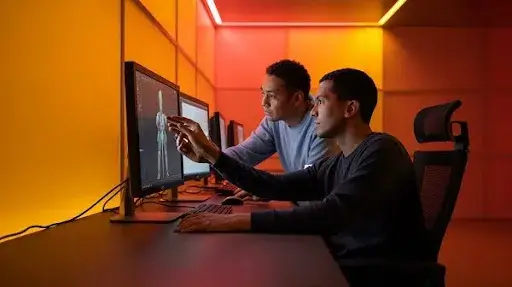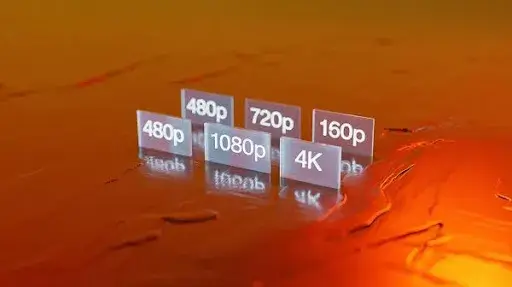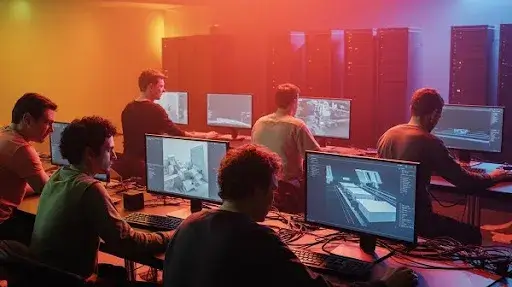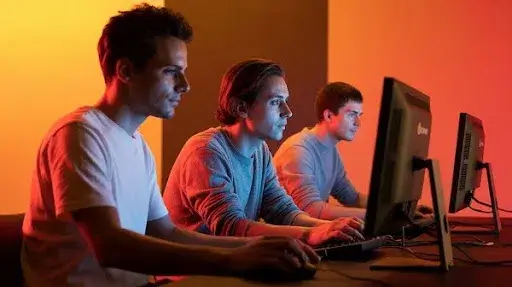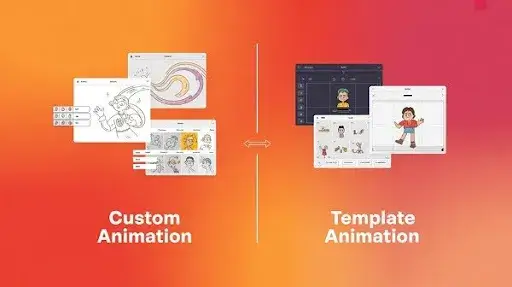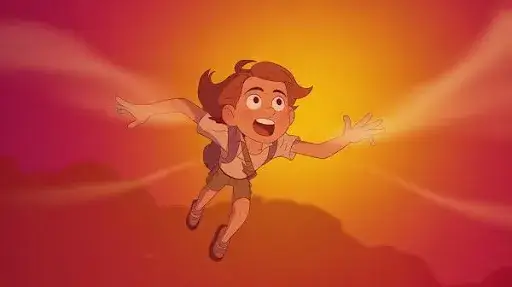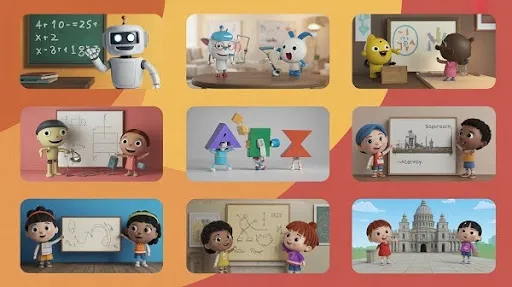Every animated movie, video game, or flashy commercial that looks too good to be real has something in common: 3D animation rendering. It’s the stage where those wireframe models finally look alive. No matter how much effort goes into character rigs or environmental detail, none of it matters until rendering gives the scene depth, color, and atmosphere.
For years, rendering felt like a technical afterthought, the last thing on a production checklist. In truth, it’s what makes the work visible. If modeling is about building, rendering is about presenting — and the difference between a flat sketch and a finished painting comes down to this step.
This guide walks through everything you need to know about 3D rendering animation. You’ll see how it works, what tools are involved, and why studios like Prolific Studio put so much weight on this part of the pipeline.
What is Rendering in Animation?
At its core, rendering animation means turning 3D data into something the eye can actually enjoy. It’s how digital geometry, surfaces, and lighting become a watchable frame.
So, what is a 3D render? It could be one still image, a preview of a scene, or a full video sequence. Whatever the form, the purpose stays the same: translate all the invisible digital math into a visual output that feels believable.
The previous step can now be done on mid-tier machines due to programs like Blender or Unreal Engine. This represents a significant leap for the industry compared to the last decade. Now we have mid and indie studios offering 3D animation services alongside the big studios. This was previously not possible due to the industry’s requirements.
Fact: In 2023, more than 57% of design companies adopted real-time rendering technology—an increase from 44% in 2021—due to the availability of faster GPUs and the need for interactive processes.
Why the Rendering Process Matters
The rendering process is not just the last checkpoint before delivery. It runs throughout the 3D animation process itself. Teams rely on test renders to review movement, check lighting, or see how visual effects sit within a scene.
It matters for several reasons: it turns raw geometry into expressive visuals, makes feedback possible during production, and sets the overall style — from photorealism to stylized looks. It also impacts deadlines and budgets, since rendering demands serious hardware power.
A project that skips smart planning at this stage risks looking flat or incomplete, no matter how strong the original models or animations are.
Breaking Down Render Passes
One clever technique in rendering 3D animation is splitting a frame into passes. Instead of dealing with everything at once, animators separate the scene into layers that can be fine-tuned later.
Every 3D model can be adjusted, and tweaks can be made without starting from scratch. Each facet, like colors, hues, shadows and highlights, can be adjusted individually. It’s flexible, efficient, and keeps creative control intact.
Techniques Behind 3D Video Rendering
Rendering doesn’t follow a single recipe. Different goals require different approaches. Here are some of the most common methods used in 3D video rendering today:
Ray Tracing
This method tracks how light behaves in the real world. It produces lifelike shadows, reflections, and refractions. The catch? It’s heavy on computing time and power.
Rasterization
Rasterization skips detailed light calculations and quickly turns polygons into pixels. That’s why it powers real-time experiences like games and VR. It’s fast, but sacrifices some realism.
Radiosity
This one focuses on indirect light — the way surfaces softly glow when light bounces around. Perfect for architectural scenes and interior designs where atmosphere is key.
Scanline Rendering
Here, the image is processed line by line. It’s efficient and good for projects that don’t need ultra-realistic lighting but must be delivered quickly.
Studios often blend techniques, picking the right one for each part of the project depending on the desired look and timeline.
Resolution in Rendering Animation
Resolution is another huge piece of the puzzle. High resolutions look sharp and detailed but demand far more computing power.
To give you an idea:
- 1080p comes in at roughly two million pixels.
- 4K jumps past eight million.
- 8K explodes to over 33 million pixels.
The difference isn’t just visible on screen — it’s felt in the render times. That’s why most teams work in lower resolution during production and only commit to full 4K or 8K when everything is approved.
It’s a balance between efficiency and quality, and the right choice often depends on where the animation will be shown — a phone screen needs far less detail than a cinema display.
Choosing the Right 3D Rendering Engine
Behind every polished scene is a rendering engine — the actual software responsible for crunching the data into final images.
Some well-known examples include:
- Blender Cycles, praised for its ray tracing ability.
- EEVEE, also in Blender, is perfect for quick previews.
- Arnold, widely used in the film industry.
- Unreal Engine, leading the charge for interactive media.
Each engine serves a slightly different purpose. Every artist, from an indie studio to a major studio, brings their own unique flair. The big ones focus on thematic elements and the project’s needs.
CPU or GPU: What Does the Work?
The power behind the rendering process comes down to hardware. CPUs and GPUs both play roles, but they approach the task differently.
- CPUs are versatile and can manage complex tasks, but usually take longer to render.
- GPUs are built for parallel processing, crunching large amounts of data quickly, which makes them great for rendering detailed scenes faster.
Performance and scale of a project also play a role. Limitations and budgets are also deciding factors.
Real-Time vs Non-Real-Time Rendering
The terms sound similar, but the impact is huge.
- Real-time rendering powers games, VR, and simulations. It generates visuals on the fly so the user sees changes immediately.
- Non-real-time rendering is the opposite — frames are calculated in advance, allowing far greater visual detail. This is what film studios use when quality is the top priority.
Most professionals switch between the two. Real-time helps during previews and editing, while non-real-time delivers the polished final product.
Render Farms: Scaling Up for 3D Animation Services
High-end animation can overwhelm even the best personal machine. That’s where render farms come in.
For smaller studios, paying to rent a render farm or a network of computers is a more cost-efficient option than purchasing several high-end computers. The farms can be paid to divide scenes into smaller tasks and work on them in parallel, then piece the final results together.
This setup doesn’t just save time — it makes it possible to take on larger projects without worrying about hardware bottlenecks. That’s why render farms have become the backbone of modern 3D animation services.
Applications of 3D Animation Rendering Across Industries
Ask most people about 3D rendering, and they’ll say movies or video games. Fair enough — that’s the flashy side of it. But in reality, rendering has slipped into places you wouldn’t expect.
Take an architectural rendering. Instead of flipping through flat blueprints, clients can now “walk” through an unfinished house or office like it already exists. Investors see how the light hits a living room at sunset or how a lobby feels when filled with people. All of that before anyone even breaks ground.
Marketers jumped on board, too. Why wait for a prototype when you can spin out a slick ad campaign with pure 3D visuals? Cars, watches, even a perfume bottle — it can all be faked so well you wouldn’t know the difference.
Education leans on it as well. Medical students test procedures in a simulated OR. Engineers take apart engines virtually without risking busted parts. Safer, cheaper, and repeatable until they’ve got it right.
And if you’ve shopped online recently, you’ve probably seen rendering at work. Spin a couch in a furniture catalog, or drop a lamp into your living room using AR — that’s rendering doing its thing, reducing returns and boosting confidence.
VR and AR are practically built on it. A soldier in a training sim, a gamer in a headset, or a shopper trying on sneakers at home — none of it feels convincing without high-quality rendering happening in real time.
So yeah, rendering isn’t just about “making Pixar movies.” It’s shaping how we shop, learn, train, and imagine future spaces.
The Challenges Nobody Talks About
For all its magic, rendering has plenty of headaches.
Time is usually the first enemy. A single frame of a film shot can take hours, even days. Multiply that by thousands of frames, and suddenly, deadlines are looking brutal.
Hardware doesn’t make life easier either. Blender might be free, but those high-end GPUs and piles of storage? Not so much. Small studios live in a constant balancing act — how far they can push their ideas before their machines tap out.
Learning curves are another wall to climb. Unreal, Arnold, V-Ray — all powerful, but none of them are “pick up in a weekend” tools. Beginners can spend months stumbling before they feel like they’re actually creating something decent.
Even experienced folks face trade-offs. Do you chase perfection at 8K and miss the deadline, or go 4K and call it good enough? That tug-of-war never really goes away.
And then there’s the data mess. Every version, every backup, every pass… projects can balloon into terabytes. Without a strict system, chaos shows up fast.
That said, newer tools and cloud systems are smoothing out the pain. It’s still work, but not the slog it used to be.
Where Things Are Heading
The future of rendering is moving faster than most people realize.
AI animation services are creeping in, handling lighting and shading predictions so you don’t need brute-force calculations for everything. Hours of work can shrink down to minutes.
Cloud rendering is reshaping budgets too. Why buy hardware that costs as much as a car when you can rent it by the hour? That shift lets small indie teams compete with massive production houses.
Real-time rendering is another leap. Engines like Unreal are getting so good that the line between “game” visuals and “film” visuals is blurring. Sometimes, you honestly can’t tell the difference.
Many studios are adopting hybrid workflows — using real-time previews for fast tweaks and non-real-time rendering for the polished final. The combo keeps projects both efficient and beautiful.
And the most exciting part? The playing field is leveling. As costs drop and tools get easier, indie creators are producing work that rivals the big guys. The monopoly on “Hollywood quality” is crumbling.
Making Rendering Less Painful
Studios that consistently hit deadlines usually aren’t just lucky — they’ve picked up tricks.
- Lock your resolution early. No need to burn hours rendering in 8K if the final output’s a web video.
- Break the project into passes (shadows, highlights, reflections). Makes editing a whole lot simpler later.
- Don’t throw full detail at your machine right away. Work with lighter previews until the final push.
- Lighting matters more than people think. A smart setup can save time and still look great.
- Test in small chunks. Catch mistakes early before they multiply.
- And don’t just follow the herd on rendering engines — pick the one that suits your job.
None of these tips sound revolutionary, but together they save countless hours (and nerves).
Frequently Asked Questions
Why does rendering matter so much?
Because without it, everything stays a wireframe. Rendering breathes life into models with light, texture, and depth.
How long does it take?
Depends. A simple scene can pop out in seconds, but a complex film frame might hog a machine for hours.
GPU or CPU — which one wins?
GPUs are usually faster, but CPUs handle tricky calculations better. Most pros mix both.
Can small studios really compete with giants?
More than ever. Cloud farms and free tools like Blender let tiny teams pull off work that used to be out of reach.
Real-time vs non-real-time — what’s the deal?
Real-time means instant feedback, perfect for games and VR. Non-real-time is slower but achieves that extra polish films need.
So what do render farms actually do?
They slice your project into pieces, spread the load across many machines, and finish in hours instead of weeks.
Final Word
Rendering isn’t some boring technical step — it’s the finishing brushstroke that makes digital worlds feel alive. From a blockbuster shot to a couch you’re checking out on an e-commerce site, it’s everywhere.
Sure, the process can be slow, expensive, and sometimes frustrating. But AI, cloud services, and smarter engines are changing the rules quickly.
At the end of the day, whether you’re a freelancer working late nights in Blender or a big studio aiming for Oscar-level quality, the ability to master rendering is what separates “pretty good” from unforgettable.
This is where Prolific Studio comes in. Work with us, one of the best animation studios in California, and get your 3D animation renderings done the right way.
Related articles:

